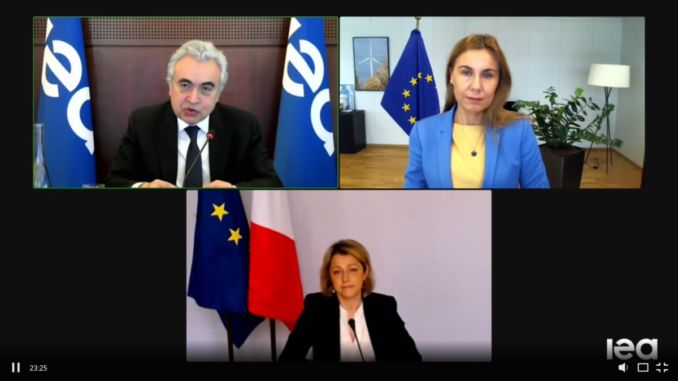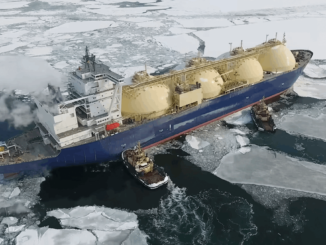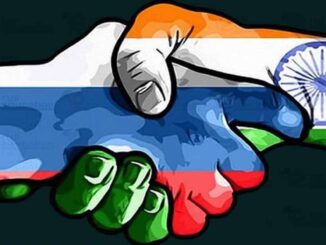
Russia is expected to meet just 25% of EU gas demand this year, its lowest level in more than two decades, the International Energy Agency said July 5.
In its latest quarterly gas market report, the IEA said that — assuming current flow patterns remain unchanged — EU imports of Russian pipeline gas were set to decline by over 45% this year to below 80 Bcm.
In the medium term, the IEA said Russian gas was set to cover 20% of EU gas demand in 2025, with a total halt in Russian imports possible by 2027.
The share of Russian gas — including LNG — in EU demand rose to as high as 47% in 2019, increasing the bloc’s dependence on imports from Russia.
Since Moscow’s invasion of Ukraine in February, the EU has committed to phasing out Russian gas imports, which the IEA said was having global repercussions as EU demand for LNG draws cargoes away from other markets.
Related story: Global gas demand to fall in 2022 as Ukraine war pushes up prices: IEA
The IEA also warned that global gas markets could remain tight for a prolonged period of time as LNG production capacity additions slow over the next three years.
“In our forecast, Russian pipeline supplies to the EU decline by over 55% by 2025 compared to their 2021 levels, with Russia meeting 20% of EU gas demand,” the IEA said.
“The report also considers an accelerated case in which they fall by over 75%,” it said.
Russia phase-out
The IEA’s falling Russian supply forecast is based primarily on the gradual expiry of Gazprom’s long-term supply contracts and the restrictions on the use of the Yamal–Europe pipeline.
Russian sanctions also prevent gas deliveries to the former Gazprom subsidiary Gazprom Germania — now under the control of the German state — over the medium term.
“Available measures could accelerate the phase-out of Russian gas, putting it on track to drop to zero by 2027,” the IEA said.
But, it warned that its current forecast was subject to “unusually large” uncertainty due to Russia’s “unpredictable behavior.”
“A complete cut of Russian gas flows cannot be excluded,” it said.
Russian gas deliveries to Europe fell sharply in mid-June when Gazprom cut supplies through Nord Stream to just 40% of capacity, citing maintenance issues with a key compressor station.
The reduction has led to reduced flows to some of the EU’s biggest buyers of Russian gas such as Germany’s Uniper, Italy’s Eni, and Austria’s OMV.
Gazprom has also cut off supplies to a number of European buyers over their refusal to comply with Moscow’s new ruble-based payment mechanism.
Concern on the European gas market over Russian deliveries has kept prices at sustained highs.
The Dutch TTF month-ahead price was last assessed on July 4 at Eur162/MWh, up 96% since the start of the month and 350% higher year on year, according to Platts price assessments by S&P Global Commodity Insights.
LNG draw
In order to offset the lost Russian flows, the EU has pledged to increase LNG imports significantly.
However, the IEA said this was having global repercussions given that LNG export capacity additions were set to slow down in the next three years as a result of curtailed investment plans during a period of lower prices in the mid-2010s and construction delays stemming from COVID-19.
“This raises the risk of prolonged tight market conditions. While there has been a recent surge in LNG investment decisions, the resulting infrastructure will not be operational until after 2025,” the IEA said.
Considering the limited additions to global LNG liquefaction capacity over the 2022-2025 period, the IEA said that any increase in EU LNG imports beyond the 120 Bcm/year foreseen in its base case would further tighten the global LNG market.
This, it said, would have negative repercussions for more price-sensitive importing regions.
It would also provide additional upward pressure on European gas prices and contribute to additional revenues for Russia.
“In this context, an accelerated phase-out of Russian gas should primarily focus on reducing gas demand and scaling up domestically produced low-carbon gases,” the IEA said.
EU regasification capacity currently stands at over 160 Bcm/year, but it is unevenly distributed with over 40% located in Iberia which is poorly connected to the rest of the continent.
“Enabling higher LNG inflow would require additional interconnectors and the scale-up of importing capacity in certain markets,” the agency said.
Source: Spglobal.com



